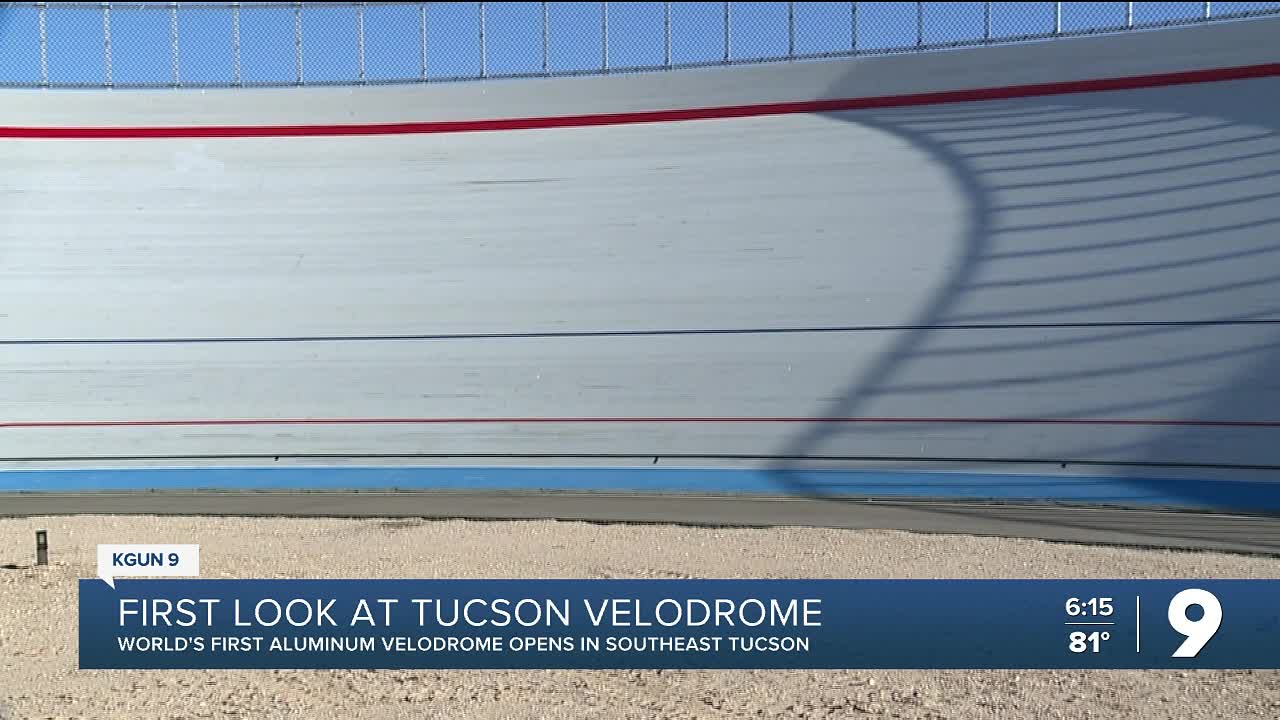TUCSON, Arizona — When you drive up to the Tucson Velodrome, the first words out of the mouths of most visitors are the same: “Wow—it looks like a spaceship.”
It’s no spaceship. It’s the Tucson Velodrome, more than two years in the making—and it was worth every minute of the wait.
Entirely privately funded, the $5 million facility is the world’s first aluminum velodrome, engineered to shrug off Tucson’s triple-digit summer heat without warping or cracking. At 250 meters long with 42-degree banking, the track lets top riders hit speeds up to 50 mph while the Santa Catalina Mountains rise dramatically in the background.John Walsh, a USA Cycling coach who just relocated from Oregon to lead programs here, can’t hide his excitement. “You have the mountains in the background and the way it was designed,” he says, gesturing at the sleek, reflective surface. “It’s totally worth the wait.”
To demonstrate just how steep the banking really is, a bike is propped up against the track. The bike is almost perpendicular to the ground, a visual reminder of the physics that keep riders glued to the oval at full tilt.
Tucson has long been a mecca for road cycling; now the velodrome adds a world-class indoor/outdoor track option. “It’s already a mecca for road cycling,” Walsh notes. “Those guys are excited to be able to train on the track, too.”But the vision stretches far beyond Olympic hopefuls. Walsh sees the facility as a safe, controlled space for riders of every stripe. “It’s going to be 8 to 80 years old that can ride this track. It’s going to hit everyone in the community."
After years of planning, fundraising, and construction, the Tucson Velodrome is open—aluminum curves gleaming under the desert sun, waiting for the next generation of sprinters, endurance riders, and curious kids on rental bikes.
Spaceship? No. Home base for Tucson’s cycling future? Absolutely.
(This article was written with the assistance of artificial intelligence)





